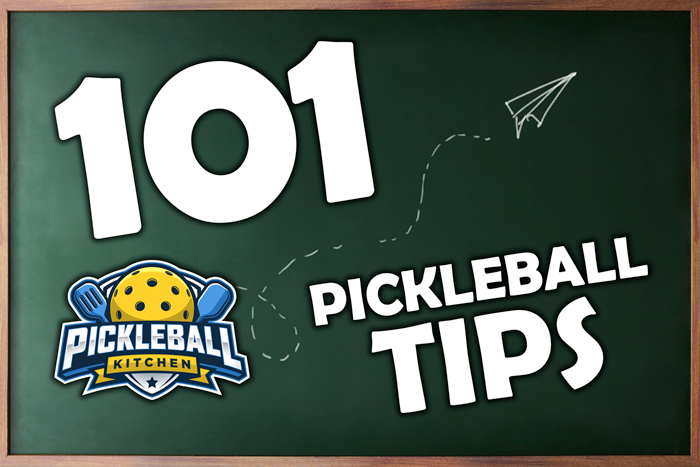Essential Fundamentals of the Pickleball Serve
We begin our pickleball mastery with the serve, the foundation of every successful game. The ideal serving technique involves holding the paddle at a 45-degree angle while keeping your wrist firm. Position your feet behind the baseline, with your dominant foot slightly back. For maximum control, toss the ball just six inches above your paddle, making contact at the sweet spot – typically the center of your paddle face.
Mastering the Dink Shot
The dink shot represents the cornerstone of advanced pickleball strategy. Execute this shot by softly hitting the ball just over the net, forcing it to land in your opponent’s kitchen (non-volley zone). Keep your paddle face open and gently push rather than a full swing. Practice maintaining consistent contact points and varying the pace to keep opponents guessing.
Advanced Court Positioning and Movement
Strategic court positioning dramatically influences match outcomes. Master the ready position – knees slightly bent, paddle up at chest level, and weight balanced on the balls of your feet. When playing doubles, adopt the stack formation near the kitchen line, allowing quick transitions between offensive and defensive positions. Implement the split-step technique when your opponent contacts the ball, enabling faster directional changes.
The Art of Shot Selection
Developing superior shot selection skills requires understanding situation-appropriate responses. The drive shot works best against deep returns, while soft game techniques excel during kitchen battles. When receiving serve, focus on deep returns to prevent opponents from rushing the net. Employ lobs strategically when opponents crowd the kitchen line, forcing them to retreat and reset the point.
Perfecting the Third Shot Drop
The third shot drop often determines rally outcomes in high-level play. Execute this crucial shot by contacting the ball with an open paddle face, using minimal backswing. Focus on creating a downward arc that lands softly in the opponent’s kitchen. Practice various spin variations to enhance shot effectiveness and unpredictability.
Kitchen Line Strategy and Control
Maintaining kitchen line dominance requires exceptional patience and touch. Develop quick reflexes for volleys while staying alert to dinking opportunities. Master the reset volley – a defensive shot that neutralizes hard-driven balls. Position yourself slightly back from the kitchen line for better shot selection and reaction time.
Effective Communication in Doubles Play
Partner communication fundamentally impacts doubles” success. Establish clear verbal and non-verbal signals for switches, poaches, and defensive coverage. Call “mine” or “yours” early and loudly during overhead opportunities. Develop strategic timeout discussions focusing on pattern recognition and tactical adjustments.
Advanced Serve Return Techniques
Mastering serve return strategies dramatically improves point-winning percentages. Position yourself deep in the court, allowing maximum time to read and react to serves. Keep returns low and deep, preventing opponents from executing aggressive third shots. Vary return placement between the middle and sidelines creates uncertainty and defensive positioning challenges.
Implementing Effective Spin Variations
Strategic spin usage enhances shot effectiveness across all areas of play. Apply topspin for driving shots that dip sharply, backspin for third-shot drops and dinks requiring extra control, and sidespin for serves that curve away from opponents. Practice varying spin intensity to maintain unpredictability.

Mental Game and Point Construction
Developing a solid mental approach separates good players from great ones. Construct points methodically, focusing on high-percentage shots during crucial moments. Practice breathing techniques between points to maintain focus and reduce pressure. Analyze opponent patterns during warm-ups to develop effective game plans.
Equipment Optimization and Maintenance
Proper equipment selection significantly impacts performance development. Choose paddle weight and grip size based on playing style and physical characteristics. Regularly check paddle surface texture and edge guard integrity. Maintain consistent grip replacement schedules to ensure optimal control and feel.
Weather Adaptation Techniques
Understanding environmental factors enables superior performance across varying conditions. Adjust shot selection and power application based on wind direction and strength. In humid conditions, keep spare paddles and grips available. Use strategic positioning to minimize sun interference during sunny matches during crucial points.
Recovery and Injury Prevention
Implementing effective recovery protocols ensures consistent performance improvement. Develop comprehensive warm-up routines focusing on shoulder mobility and lower body flexibility. Practice proper footwork patterns to reduce joint stress. Maintain hydration levels before, during, and after play to optimize performance and recovery.
Tournament Preparation Strategies
Successful tournament performance requires systematic preparation approaches. Simulate tournament conditions during practice sessions by implementing scoring pressure and time constraints. Study potential opponent tendencies through match observation and video analysis. Develop specific game plans for varying playing styles encountered in bracket play.
The journey to pickleball excellence requires dedication to fundamentals while progressively incorporating advanced techniques. Regular practice focusing on specific skill development, combined with strategic match-play experience, accelerates improvement across all aspects of the game. Remember that consistency in essential shot execution provides the foundation for advanced tactical implementation.





